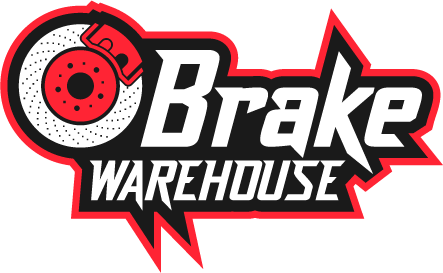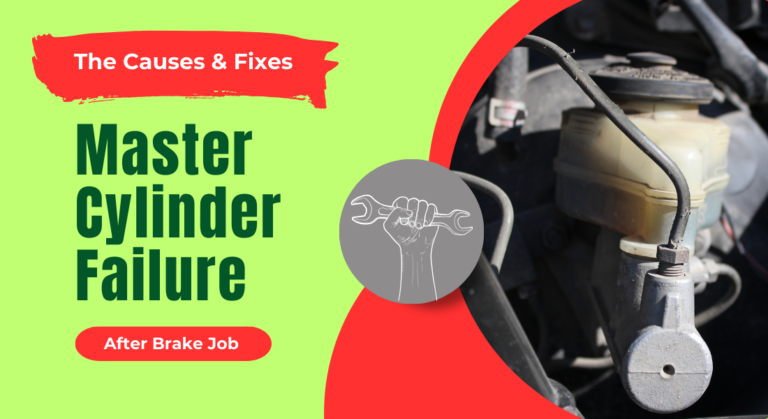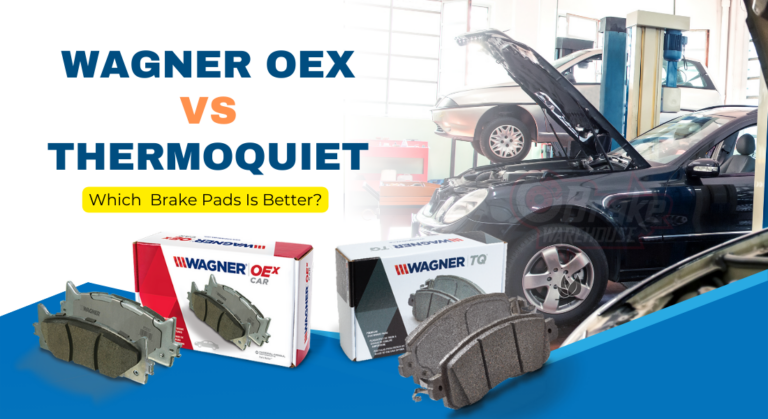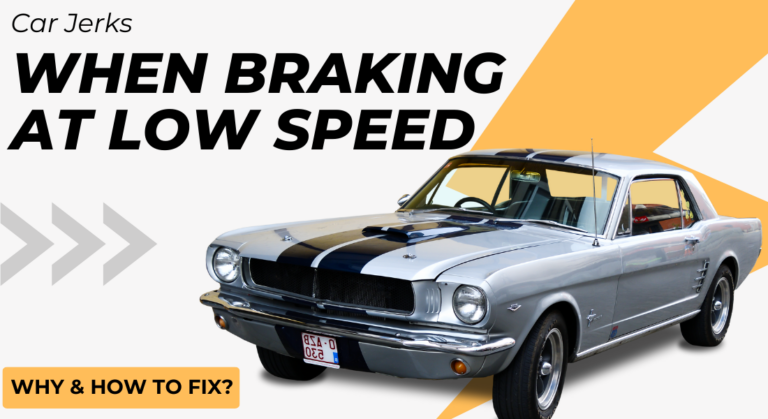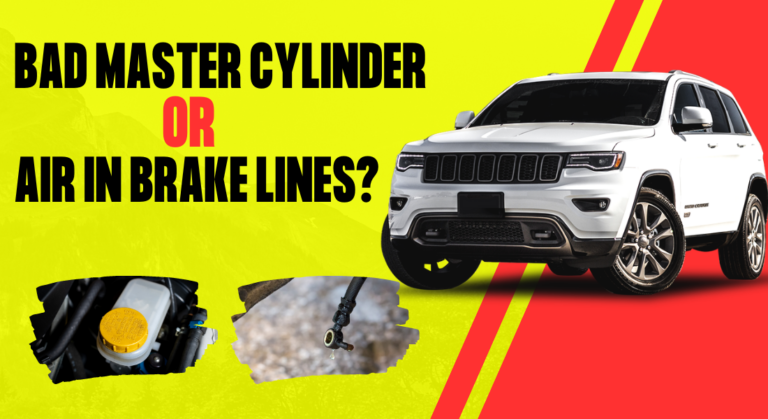Noise When Releasing Brake Pedal – 7 Reasons To Check
Noise from your car’s brakes seems unusual. This noise typically signals a mechanical problem. Thankfully, the problems come with straightforward remedies. However, the question is: why there is noise when releasing brake pedal
The causes include insufficient brake fluid, worn brake pads, dirt in brake drums, damaged brake calipers, CV system problems, deteriorated suspension bushings, and brake booster issues.
Continue reading to learn more about these concerns and how to solve them for a smooth brake experience.

Why There is Noise When Releasing Brake Pedal?
The brake system in your vehicle is equipped with complex arrangements. It functions with the help of various components, ensuring your safety on the road.
When you release the brake pedal and hear unusual noises, it’s a cause for concern. Let’s explore the primary reasons behind the noise and practical solutions.
1. Lack of Brake Fluid
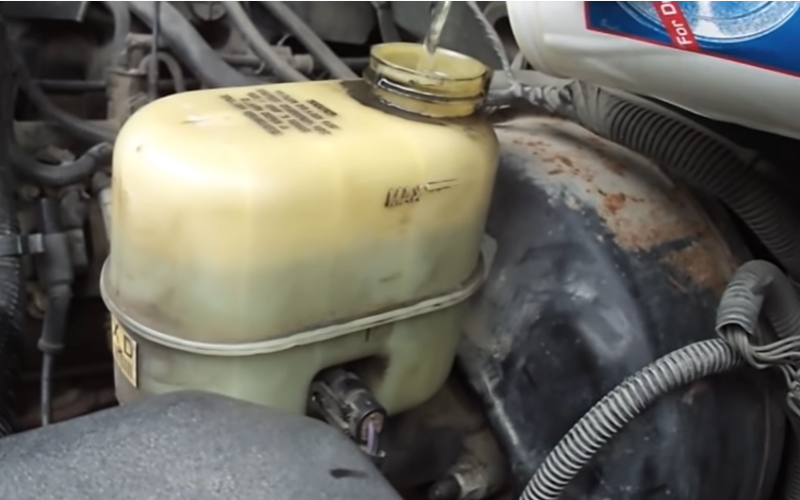
Your brake system relies on hydraulic principles, and at its core is brake fluid. This hydraulic fluid travels through the brake lines, reaching all corners of your vehicle when you engage the brakes. This fluid allows you to exert force on the vehicle, gradually slowing it down until it completely stops.
If your vehicle runs low on brake fluid, you may notice a disturbing creaking sound when releasing the brake pedal. This sound indicates that the brake system is not functioning optimally. To address this issue, you should begin by checking the brake fluid level in your vehicle.
Before checking, it’s advisable to let the engine cool down. The brake fluid reservoir can typically be found on the vehicle’s driver’s side. Once you’ve located it, inspect the fluid level and quality. If the fluid appears black or has thickened, it’s a clear warning sign that something is wrong.
Solution
If the brake fluid level is low, you can rectify the situation by adding more fluid until it reaches the appropriate range.
It’s crucial to note that different vehicles may require different types of brake fluid. So it’s essential to consult your owner’s manual to identify the correct type. When adding brake fluid, do so gradually, typically in one-quart increments.
In cases where the quality of the brake fluid is compromised, the solution involves draining the old fluid and replacing it. This corrective action should eliminate any noise from the brake system if the degraded fluid is the root cause.
2. Worn-Out Brake Pads

In your vehicle’s braking system, brake calipers play a pivotal role by exerting pressure on the brake pads. They clamp onto the rotors when you apply the brakes.
Over time, brake pads naturally wear down due to the high heat and pressure generated during braking. This wear and tear often manifests as a noticeable groaning noise when you release the brake pedal.
Solution
Replace the worn-out brake pads that produce unpleasant noises.
As a general guideline, regular inspection of your brake pads every 5,000 miles is recommended. Typically, brake pads should be replaced after covering a mileage range between 25,000 to 60,000 miles.
This proactive approach ensures that your braking system remains in optimal condition. Also, the system will provide safe and reliable stopping power when you need it most.
Read Also: My Brake Pedal Is Pushing Back – Why & How To Fix It?
3. Debris Accumulation Inside Brake Drums

Over time, while you continue to drive your vehicle, a buildup of dirt and brake dust can find its way inside the brake drums.
Although not a critical issue, it can be pretty bothersome, leading to a squeaking noise when you release the brake pedal.
Solution
Remove the accumulated dust and debris within the brake drums. You can undertake this task yourself with relative ease. Start by removing the tire and unscrewing the bolts that secure the brake drums.
Once you can access the interior, employ a brake cleaner to eliminate the dirt thoroughly. Applying caliper grease to the contact points where metal surfaces interact is also essential.
After completing these steps, reassemble the components. This straightforward procedure should eliminate the brake noise experienced when applying the brakes gently.
4. Malfunctioning Brake Calipers

Brake calipers are situated at each wheel in your vehicle. This component is crucial to compressing the rotors against the brake pads. Such an action gradually decelerates the car by reducing the wheel’s speed, ultimately stopping it.
When you release the brake pedal and detect a distinct clunking noise, it is highly likely attributed to faulty brake calipers. Another noticeable indication is a sensation of drag originating from the wheel associated with the problematic caliper.
A quick diagnostic method involves placing your hand near the wheel. If you sense excessive heat emanating from the caliper, chances are it’s malfunctioning.
Additional symptoms of a compromised brake caliper encompass the illumination of the brake warning light. Vibrations when pressing the brake pedal is another symptom. Moreover, the vehicle pulling to one side during braking, and a burning odor around the wheel area are other common signs.
Solution
The most effective solution is to replace the malfunctioning brake caliper with a new one. This procedure typically incurs a cost ranging between $100 to $200. It’s reassuring to note that brake calipers are built to last, often exceeding a mileage of 100,000 miles or more.
Therefore, you can expect reliable performance from your new caliper for an extended period, minimizing concerns about another replacement job anytime soon.
Read Also: What Causes Brake Pedal Sticking? (Fix Now)
5. Constant Velocity (CV) System Complications:
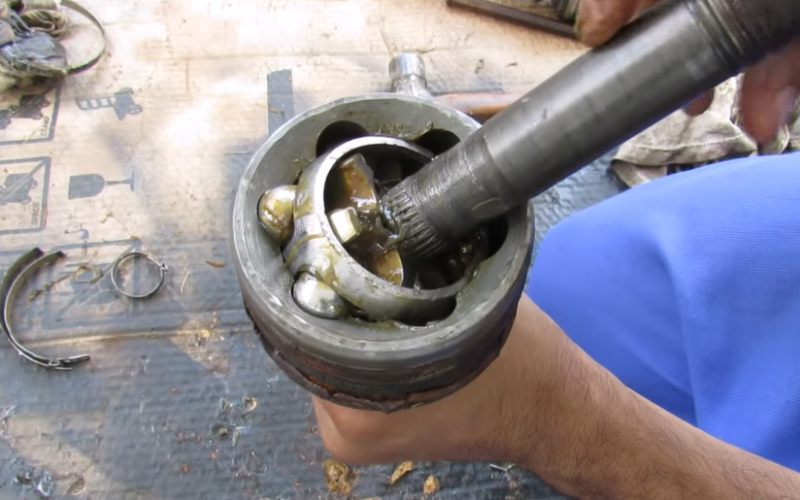
In your vehicle, the Constant Velocity (CV) joints and axles are crucial in imparting power and direction to the wheels. The CV joints serve as the linkage between the transmission and the wheels, while the CV axles are responsible for transmitting power to the wheels.
These components collectively facilitate the vehicle’s ability to move in any direction and maintain a consistent velocity. Any issues within the CV system may manifest as a distinctive clicking noise when you release the brake pedal.
A telling sign of a faulty CV axle is the presence of grease on the inner edges of the front wheels. A rubber boot typically seals this grease, and grease leakage occurs when it wears or tears due to regular wear and tear.
Moreover, a severely damaged CV joint can lead to your vehicle pulling to one side during operation. Additionally, in extreme cases, it may cease to move entirely.
You might even observe smoke emanating from the compromised CV joint in such instances.
Solution
Driving with a defective CV joint poses severe risks to your safety and others on the road. It is imperative to replace the CV axle promptly. The cost associated with this repair typically amounts to around $1,000.
Based on the complexity of this task, the services of a skilled technician is highly recommended.
Replacing CV axles or joints demands expertise, time, and specific tools. To ensure a safe and effective repair, consulting professional assistance will be a wise choice.
Read Also: How to Fix Hard Brake Pedals After Bleeding?
6. Deteriorated Suspension Bushings:

Suspension bushings are critical to your vehicle’s suspension system by preventing erosion between various metal components. They are pivotal in mitigating vibrations and noise emanating from the suspension system.
However, when these suspension bushings succumb to wear and tear, you’ll likely notice a grinding noise when releasing the brake pedal. This noise occurs because the worn bushings lose their ability to control vibrations and noise within the suspension system effectively.
In addition to the audible signs, worn-out suspension bushings can manifest as challenges in steering your vehicle at higher speeds. Furthermore, a noticeable shimmy or instability in the front end of your car is a clear indicator of failing suspension bushings.
Solution
To eliminate the bothersome noise, replacing the damaged suspension bushings is imperative. This replacement typically ranges from a few hundred dollars for most vehicles. I strongly recommend enlisting the services of a professional mechanic for this task, as it involves intricate work.
It’s worth noting that replacing the bushings individually may be impossible in some vehicle designs. In such cases, the entire control arm may need replacement, which can be more expensive. Therefore, it’s advisable to consult with a mechanic to determine the most suitable course of action for your specific vehicle.
7. Brake Booster Malfunctions
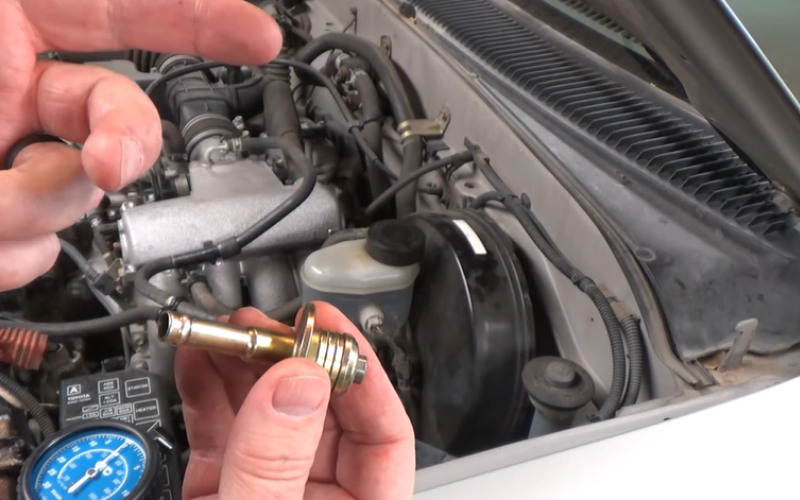
The brake booster is pivotal in enhancing your car’s braking system. It allows you to effectively slow down or stop your vehicle with minimal force applied to the brake pedal. This vital component relies on vacuum pressure to operate efficiently. Also, a diaphragm inside it regulates the pressure when you don’t exert pressure on the brake pedal.
However, if something disrupts the intricate workings of the brake booster, you may notice an air-like hissing sound when you release the brake pedal. Several common reasons can lead to this issue:
- Leak in the Vacuum Hose: A breach in the vacuum hose connected to the brake booster can result in a hissing noise when the brake pedal is released.
- Failing Brake Booster Diaphragm: If the diaphragm within the brake booster becomes faulty or deteriorates, it can lead to a hissing sound when releasing the brake pedal.
- Air Leakage from the Master Cylinder Gasket: Air escaping from the master cylinder gasket into the brake booster can also contribute to the hissing noise.
- Worn-Out or Missing Foam Silencer: A worn-out or absent foam silencer can exacerbate noise.
Solution
It’s crucial to have a qualified mechanic inspect your vehicle. The solution can range from a relatively inexpensive fix, such as replacing a missing foam silencer.
Consult a professional to diagnose and address the issue. They can help you ensure your brake booster’s effective and safe operation.
FAQs
Is it safe to drive with noisy brakes?
Driving with noisy brakes can be risky as it often indicates underlying issues with the braking system. These issues can compromise braking performance, potentially leading to longer stopping distances and reduced control. It’s crucial to inspect and repair noisy brakes promptly to ensure safe and effective braking.
Can worn-out brake pads lead to noise when I release the brake pedal?
Yes, worn-out brake pads can lead to noise when you release the brake pedal. As brake pads wear down, their diminished thickness can result in metal-to-metal contact with the rotor. This friction produces squeaking, grinding, or other audible sounds, which become noticeable when you release the brake pedal.
Final Words
Numerous drivers often need to pay more attention to brake system maintenance, leading to problems such as brake pedal noise.. As a result, look for the answer: why there is noise when releasing brake pedal. Preventing these issues is possible through diligent vehicle care from the outset.
However, if you’re currently facing this problem, you already know the primary causes and how to solve them, as outlined in this article.

Meet Zayan, the mechanical genius behind the highly acclaimed brakes problems and solutions website. With over a decade of hands-on experience in the automotive industry, Zayan has become a trusted authority in the realm of brake systems.
His passion for cars, coupled with his expertise in solving complex brake-related issues, has earned him a devoted following of car enthusiasts, mechanics, and everyday drivers seeking reliable guidance.
